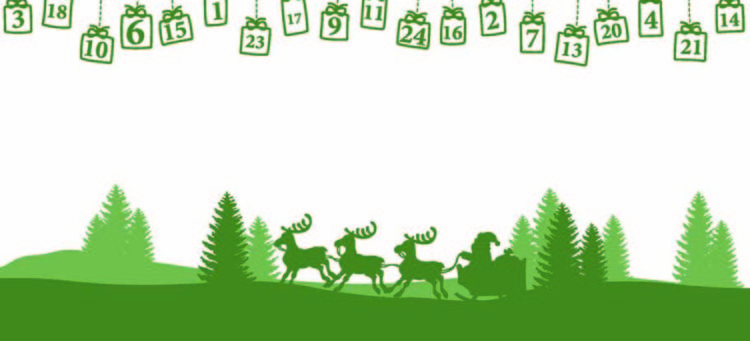
Then & Now
Advent Calendars
October, 2017
Today’s Advent calendars are big business, charismatically concealing treats that range from the chocolatey to the blush-worthy. But Advent calendars weren’t always novelty treats to enjoy throughout December. They used to be part of a deeply religious ceremony that celebrated the impending coming of Christ. But little by little, Advent calendars changed, as did the traditions of the people who used them. Today, the tradition of having an Advent calendar is enjoyed by both the religious and secular. Here’s how it all began…
1800s
According to Christian tradition, Advent is a four-week period used by members of the church to prepare themselves for the celebration of Christ’s birth. There are many different traditions associated with Advent, but modern calendars grew out of a very specific tradition of 19th century Germany. It was common for families to hang a series of 24 religious images on one of the walls of their home during December, each image referencing a specific biblical story. By the time Christmas came around, there would be a full collage of religious iconography, and the family would be fully prepared to celebrate the birth of Christ.
1900s
This practice of hanging icons on the wall spread throughout Germany, and by the 20th century it was a national tradition. However, not everyone could easily afford a set of 24 ornate icons. In 1908, companies in Germany began to mass-produce religious icons on sheets of cardboard and sell them alongside large numbered calendars. Instead of hanging an icon on the wall every day, you simply had to paste your daily cardboard image onto your calendar. These first Advent calendars were cheap and allowed families to enjoy a new set of images every holiday season.
1920s
In 1920, a calendar producer named Gerhard Lang got the idea to make each day’s image a surprise. He produced a set of calendars with 24 little windows that could be opened day by day to reveal religious images, bible verses or small candies to help people get into the holiday spirit.
1930s
The 1930s were a time of scarcity all over the world, Germany included. Limited paper during the Depression and World War II meant that the production of Advent calendars was no longer a viable business venture. Nazi law also prohibited the association of Christianity with Christmas, which made Advent calendars a dangerous commodity if you were caught with one.
1940s
In 1949, four years after the end of World War II and the fall of the Nazi regime, Germany’s economy had recovered enough that people were once again ready to spend money on cardboard advent calendars. A German businessman named Richard Sellmer began his own Advent calendar company and re-popularized the tradition.
1950s
Sellmer recognized the vast consumer market that existed in the United States and successfully filed for an American patent on his Advent calendars. One of the early American adopters
of this German tradition was President Dwight Eisenhower, who posed for Christmas press photos alongside his grandchildren and Sellmer’s calendar. With the endorsement of the president, Advent calendars soon became an American holiday standard.
In 1958, the Cadbury chocolate company started to produce its own calendars in Britain, and decided to release a calendar with a full set of 24 chocolates behind the windows, a decision that soon became the standard for Advent calendars everywhere.
Today
In the early 2000s, toy companies like Lego began experimenting with their own novelty Advent calendars, which were completely secular and themed around their own products. These calendars were wildly popular with children, and it wasn’t long before adults wanted in on the fun. These days you can find Advent calendars that contain not only chocolate and toys but also things like liquor, tea, cosmetics, short stories and just about anything else you could imagine. t8n
Fun Fact
Advent chocolates don’t taste the same as your average chocolate bar. This is because they typically use a different set of ingredients, which makes the chocolate cheaper to produce, easier to mould into shapes and more likely to last on a shelf for weeks and months at a time.
Did You Know?
The word Advent is Latin for “arrival” and refers to the celebration of Christ’s arrival into the world on Christmas.













